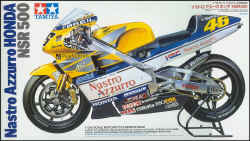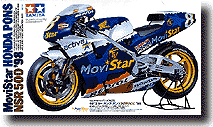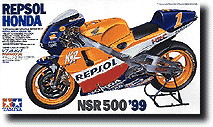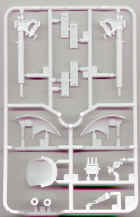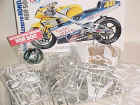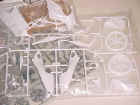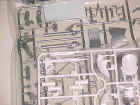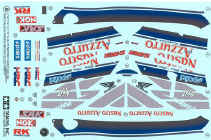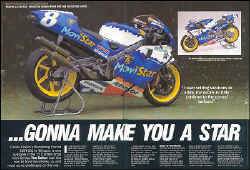 |
||||||||||
|
Motorcycles/Review |
|
|||||||||
|
Tamiya's Honda NSR 500 Nastro Azzurro 1/12 scale |
||||||||||
|
by Mario Covalski |
||||||||||
|
Meanwhile I'm waiting to receive the last two 1/12 motorcycles Tamiya's releases, I'm enjoying my last kit that became to my hand, the Honda NSR 500, Nastro Azzurro team, version 2000. This last Tamiya's release (14082) it is not very different from the ' 99 Repsol Honda (14077) and the ' 98 Movistar Honda Pons (14072) versions.
The chassis, as well as the rear wheel frame, is chromed, I usually remove the chrome layer from this kind of parts. This allows us an easy building, without leaving gaps. For painting the assembly chassis, I advise to apply a light layer of Testor Metalizer aluminum (non buffing ) and then a layer of Humbrol Metalcote aluminum (buffing), which should be smoothly polished, achieving a surprising effect.
The rest of this Honda motorcycle building isn't more complex than the previous models, except as always, for the diversity of colors that each small part should be painted, the masking job is exhausting. My technique is to paint at first the more extensive or clearer color with Tamiya enamel and then to mask to continue with the second color, but sometimes I prefer (for small parts) to apply several layers of Tamiya's acrylic paint, very diluted, with an appropriated brush, it simplifies the work and with the practice the result will be good.
As always it is necessary to add some carbon fiber decal to the motor air intakes and the rear fender.
Another interesting idea to improve the aspect, is to replace the brakes vinyl tubes and electric wires in general, by those used in electronics from 0,45 up to 0,80 mm, this looks more real. The joint can be achieved with small vinyl pieces that at the same time look like protection covers. Besides, you can also add on the instruments panel decals, a drop of Microscale Kristal Klear.
|
||||||||||
